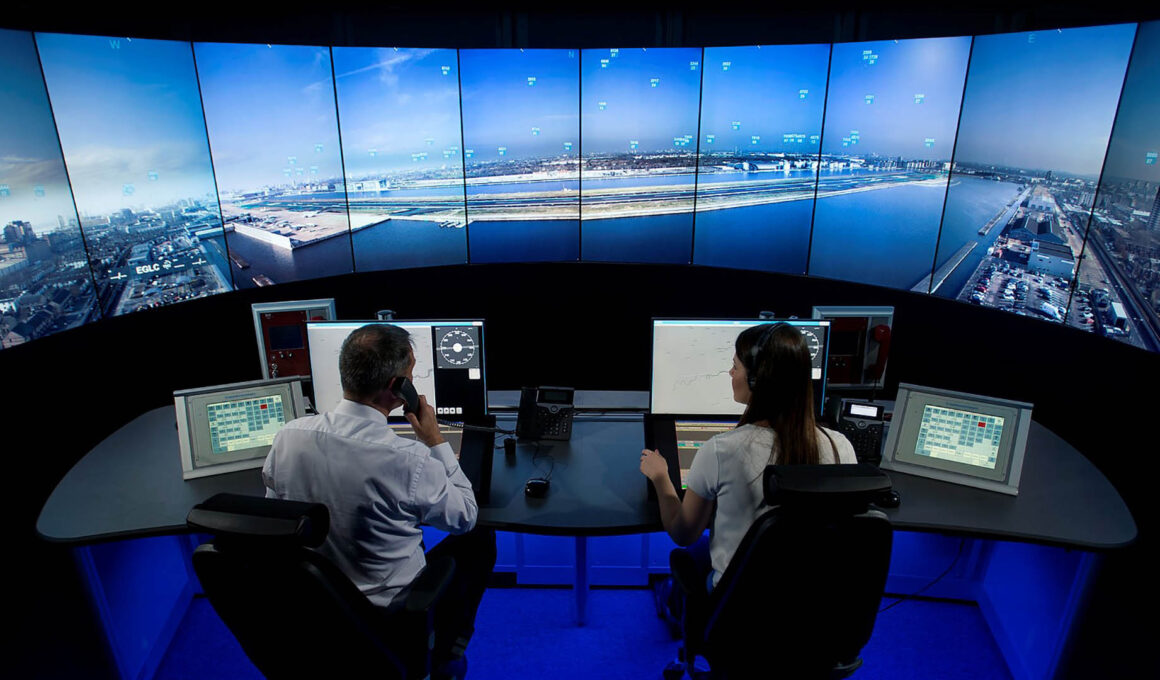Insights from Traffic Management Aerospace Industry — A complex environment @ Boeing
Linkedin
Sam Ransbotham
May 31, 2022
With so many potential applications of AI, which ones should organizations pursue?
My cohost Shervin Khodabandeh and I recently talked with Helen Lee, regional director of air traffic management and airport programs for Boeing China, on the Me, Myself, and AI podcast episode “ AI in Aerospace.”
Helen oversees Boeing’s airport and air traffic management programs in China, working to improve airport and airspace operational efficiency and at the same time enhance flight safety. I found the whole conversation fascinating … but also really intimidating.
The fascinating part is clear. Helen described numerous potential applications of AI in the work Boeing is doing. For example:
- Optimizing flight plans to reduce fuel consumption and carbon dioxide emissions.
- Navigating complex handoffs between various controllers during the phases of flight.
- Employing image recognition for managing aircraft wake turbulence.
- Using robotic cameras to inspect aircraft fuselages for damage.
- Developing speech recognition technology for cockpit-controller communication.
Each of these seems like a great way to benefit from AI, and Boeing has more ideas for projects than it can pursue.
As a result, many of the company’s potential AI applications are precisely that: potential applications.
So far, they remain in the investigation and planning stages for the compelling reason that the context is quite intimidating.
Air traffic management requires absolute precision, with practically zero error tolerance.
It is a big deal when planes end up in Scotland instead of Germany or Melbourne instead of Malaysia.
If these problems are challenging for humans, they’re likely really hard for AI.
Furthermore, many managers we’ve talked with have described how their AI systems need time to grow into a high level of performance.
After all, a critical part of machine learning is learning. Learning implies that systems don’t get everything right on the first try, but there is little room for mistakes in the air traffic context.
When we talk to many people about their organizations’ use of AI, they describe applications that can handle a lot of mistakes as systems learn.
Fraud detection? OK; perhaps a miscreant steals some money.
Loan approval? Maybe you have to write off a bad loan. Movie recommendation? You spend some time watching “Dune” that you could have better spent doing something (anything!) else.
These applications of AI are quite forgiving as systems mature, because organizations can recover from the consequences of a mistake.
But Helen described many potential applications at Boeing that place complex problems within an unforgiving context — a difficult combination.
As a result, Boeing’s difficulty isn’t the lack of opportunity to apply AI or a lack of interest. Boeing must select projects that can be successful.
Shervin recently gave a TED Talk titled “Why People and AI Make Good Business Partners.” (Hmm. … Now that I think about it, maybe he was thinking that AI would make a better partner than me.)
His talk focused on redesigning companies so that people and machines can learn from each other.
Shervin noted that in his work with many managers, “inside their companies, there’s literally hundreds of these opportunities for human-AI combination.” Again, there’s no shortage of opportunity.
But many times, people think first about applications that replace people.
In talking with Helen about Boeing, we learned that some of its potential applications lean toward replacement, such as the example of replacing cockpit-controller communication with speech recognition. These types of applications seem further from implementation at Boeing.
Applications like the use of robotic cameras to ease inspection rely on human and AI collaboration.
So does lidar, when it assists engineers in managing wake turbulence.
Boeing is further along with applications that are unlikely to automate away the need for humans.
Boeing is further along with applications that are unlikely to automate away the need for humans.
In his talk, Shervin went on to say that “technology and automation can only go so far, and for every one automation opportunity inside a company, there’s literally 10 for collaboration.”
This type of collaboration will challenge companies, because “it requires a new mindset and doing things differently than how we’ve always done it,” he noted.
But these challenges might be a better use of scarce organizational resources than attempting human replacement, particularly in the complex context that organizations like Boeing face.
… “technology and automation can only go so far, and for every one automation opportunity inside a company, there’s literally 10 for collaboration.
This type of collaboration will challenge companies, because “it requires a new mindset and doing things differently than how we’ve always done it,”…
Originally published at https://www.linkedin.com.
About the author
Professor at Boston College; AI Editor at MIT Sloan Management Review; Host of “Me, Myself, and AI” podcast
Names mentioned
Shervin Khodabandeh
Helen Lee, regional director of air traffic management and airport programs for Boeing China











